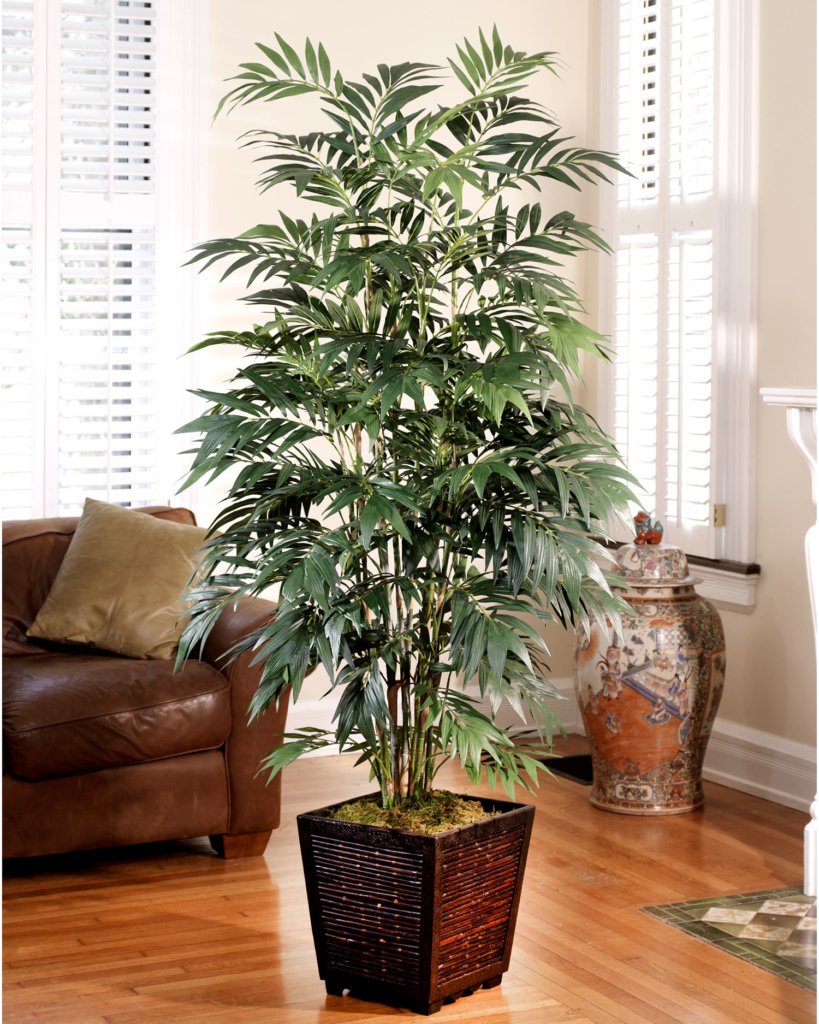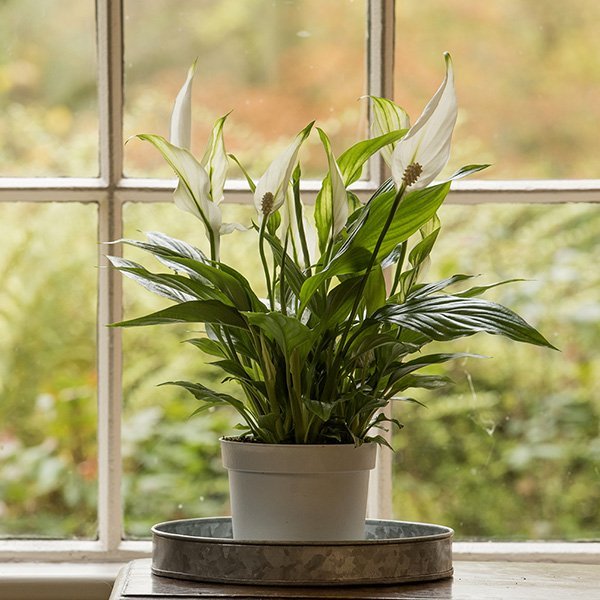Indoor house plants can be a beautiful addition to any home. Plants are believed to promote peace and better health to any space by helping you keep in touch with nature. This alone is a good enough reason to surround yourself with a little of the greens. The fact that indoor plants help in fighting indoor pollution is an added bonus which can assist in keeping you healthier. Here is our recommendation for Five must have Indoor plants for Indian Homes
You can also use house plants to liven up a room or for an easy decorative touch. The placement of a beautiful flowering plant in an empty corner or entry way can make a huge difference that will amaze you.
Indoor plants are mostly tropical or sub-tropical as these are best suited for a typical Indian home environment that has year round moderate temperature. Many indoor plants are highly versatile and can thrive with only basic maintenance. Here are five types of indoor plants that are great for our interior spaces and they are amongst the most powerful natural air purifiers around.
#1 Indoor Plant for Indian Homes: Money plant
Scientific Name: Epipremnum aureum

Also known as Devil’s ivy, money plant is a hardy plant that grows with minimal maintenance as it is capable of withstanding the extreme Indian weather conditions. This is the most common houseplant that you may possibly have noticed hanging from fences or pots in many households around you. This plant has beautiful heart-shaped green leaves with small yellow/ white spots which can make any house look more vibrant.
This plant can absorb the harmful Volatile organic compounds (VOCs), thus purifying the air inside the house. According to Vaastu, this plant is believed to bring you greater material abundance when positioned in the south-east corner of your home. With long vines, don’t be surprised if this plant slowly takes over your space, of course, you can trim them as you like.
Pot type – This low-maintenance vine can grow both in container and water. Small pots can be put on a height to allow the vine to trail downwards. They can also grow well on a net or jaali.
Requisites –Indirect sunlight is the best for this plant. If you have planted it on soil, water it only when you think the soil is dry or just twice every week.
Things to remember – You will see brown or yellow leaves if the soil is in poor conditions. Trim the plant once every 2 to 3 months for green and healthy leaves. Spray some nitrate if you feel the plant is looking dry.
It is wise you keep this plant away from pets and small children as it is mildly toxic in nature.
#2 Indoor Plant for Indian Homes: Snake plant
Scientific Name: Sansevieria trifasciata
 With sturdy and long pointy leaves, snake plant is known to absorb 100 different air toxins including oxides, chloroform, and alcohols. Unlike other plants, this succulent releases oxygen at night; therefore it is an amazing indoor plant for bedrooms. This plant is highly adaptable and super easy to grow, as well as maintain.
With sturdy and long pointy leaves, snake plant is known to absorb 100 different air toxins including oxides, chloroform, and alcohols. Unlike other plants, this succulent releases oxygen at night; therefore it is an amazing indoor plant for bedrooms. This plant is highly adaptable and super easy to grow, as well as maintain.
Pot type – Choose a large and sturdy pot that stays steady when the plant grows big.
Requisites –This hardy plant needs moderate weather conditions and indirect light. Do not over water it; 2 times a week is more than enough.
Things to remember – This evergreen houseplant is slightly toxic in nature for plants.
#3 Indoor Plant for Indian Homes: Aloe vera
Scientific Name: Aloe vera

Aloe vera is an incredibly useful plant that has been valued as an herbal remedy since ages. Well known for its beauty benefits, this succulent is often used as the key ingredient in many skin and hair care products. Additionally, it is a much-loved indoor plant too. It has a penchant for Formaldehyde and benzene effectively. This plant is also a great choice for living rooms and bedrooms as it is considered to exude positivity. Its healing goodness and attractive look make it a preferred indoor plant for many.
Pot type – Choose a medium-sized pot with proper drainage, so that there’s no waterlogging. When the pot gets crowded with roots, replant it in a bigger pot.
Requisites – This ornamental plant grows well in indirect sunlight. Pick a well-drained pot for this succulent to flourish. It requires minimal maintenance, only water it when you feel the soil is dry.
Things to remember – Look out for the brown leaves, if you ever find them, reposition the pot to a reasonably shaded area of the house.
#4 Indoor Plant for Indian Homes: Bamboo Palm
Scientific Name: Chrysalidocarpus lutescens

Also known as the Butterfly Palm or the Areca Palm, the Bamboo Palm is a superb air purifying plant, with a peculiar affinity for benzene, formaldehyde, and carbon monoxide. This resilient also grows in dry weather.
Bamboo Palms grow quickly and can become up to 4 meters in height, but you can limit their height by trimming them regularly. This plant is great at eliminating toxins from the indoor air including formaldehyde and carbon monoxide. The plant is absolutely non-toxic and safe for pets or children.
Pot type – Go for a large pot as Bamboo palm can grow quite large. Replant it to a bigger pot when the existing pot is full of roots. Pick pots drain holes to prevent rotting of the roots from water logging.
Requisites – This plant needs low or indirect sunlight. Water it daily; however, decrease the amount of water in winters as there is less water loss in winter.
Things to remember – Look out for bugs and spider mites on the leaves and stem on a regular basis. Make sure the stems are clean and clip the brown leaves if there’s any. You could make DIY fertilizer and add it once every two months.
#5 Indoor Plant for Indian Homes: Peace lily plant
Scientific Name: Spathiphyllum wallisii

The peace lily plant is not the lily species but actually the flowering Araceae species. It is a beloved indoor plant across the subcontinent as it is highly adaptable to sudden weather changes and extreme weather conditions.
Besides being visually eye-catching, it’s an amazing air purifying houseplant that efficiently eliminates all common indoor air pollutants produced by electronics, cleaning products and furniture, so much so that it is one of the top-ranked indoor plants by NASA for this reason. This decorative plant can be put in bedrooms, bathrooms or living rooms to breathe life into the existing decor.
Pot type – The perfect pot size for a completely grown peace lily plant would be approximately 25 cms in diameter. Choose a pot with self-draining holes since this plant can rot because of the waterlogged soil. You can also keep it inside the larger ornamental pot to make the increasing foliage look balanced.
Requisites – This ornamental plant grows best in the shaded areas. Water it thrice a week in summer and twice in winter, or just sufficient to keep the soil moist.
Things to remember – Prune only the dead stems and leaves. Train your pet not to chomp on the flowers as this plant secretes an irritant sap. You can make compost out of vegetable peels and add them to the soil every month.
In order to have healthy indoor plants, you do need to learn a little about each variety you select and how to take care of it. Soil, sunlight, water, temperature, humidity, and fertilization are some of the important factors that will affect how your plant thrives. Happy Planting!

